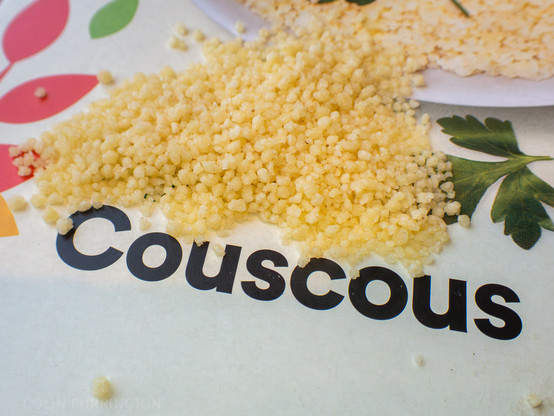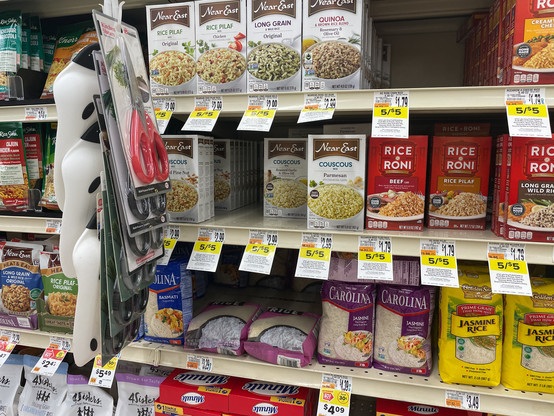My current pet peeve is grocery stores shelving couscous in the rice and grains section. It's PASTA! Drives me crazy, and likely results in some people believing that couscous is a small yellow seed that has some sort of health benefit. #couscous #seeds #pasta #grains #food #semolina #flour #groceries #botany
Recent searches
Search options
#grains
https://www.europesays.com/uk/10255/ France’s Fifth Republic is on the ropes – POLITICO #Banks #Budget #Courts #Crisis #Democracy #DonaldTrump #Elections #EmmanuelMacron #EU #Europe #France #FrenchPolitics #Fuels #Germany #Grains #Italy #Macron #MarineLePen #Parliament #Pensions #Poll #Rights #TheNetherlands #Trade #TradeWar #UnitedStates #War #WarInUkraine
Mediterranean Diet, Veganism Linked to Lower COVID-19 Risk https://www.diningandcooking.com/2004556/mediterranean-diet-veganism-linked-to-lower-covid-19-risk/ ##COVID19 #covid #data #diets #exercise #Fish #Foods #grains #LargeNewStudy #LowerCovid19Risk #Mediterranean #MediterraneanDiet #MediterraneanVeganDiet #MediterraneanVegetarianRecipes #nuts #people #plant #QualityDiet #researchers #VeganMediterraneanDiet #VegetarianMediterraneanRecipes #veggies
Higher intakes of mostly plant-based food (fruits, #veggies, whole #grains, unsaturated fats, nuts, #legumes) is linked to healthy #aging; intakes of transfats, #sodium, #sugar beverages & red or processed #meats isn't: #Diets rich in #plantbased foods may help healthy aging: doi.org/10.1038/s415...
Optimal dietary patterns for h...
Underrated aspects of a true Mediterranean diet: understanding traditional features for worldwide application of a “Planeterranean” diet | Journal of Translational Medicine https://www.diningandcooking.com/1969619/underrated-aspects-of-a-true-mediterranean-diet-understanding-traditional-features-for-worldwide-application-of-a-planeterranean-diet-journal-of-translational-medicine/ #Biomedicine #Fish #general #grains #herbs #légumes #Medicine/PublicHealth #Mediterranean #MediterraneanDiet #MediterraneanWine #OliveOil #PlanetaryDiet #PlantBased #Spices #sustainability #Wine
Evaluation of the nutritional quality of French children breakfasts according to the Breakfast Quality Score (BQS) https://www.diningandcooking.com/1967001/evaluation-of-the-nutritional-quality-of-french-children-breakfasts-according-to-the-breakfast-quality-score-bqs/ #breakfast #francais #france #French #FrenchBreakfast #grains #meal #NutrientProfiling #NutritionalAdequacy #NutritionalRecommendations #score
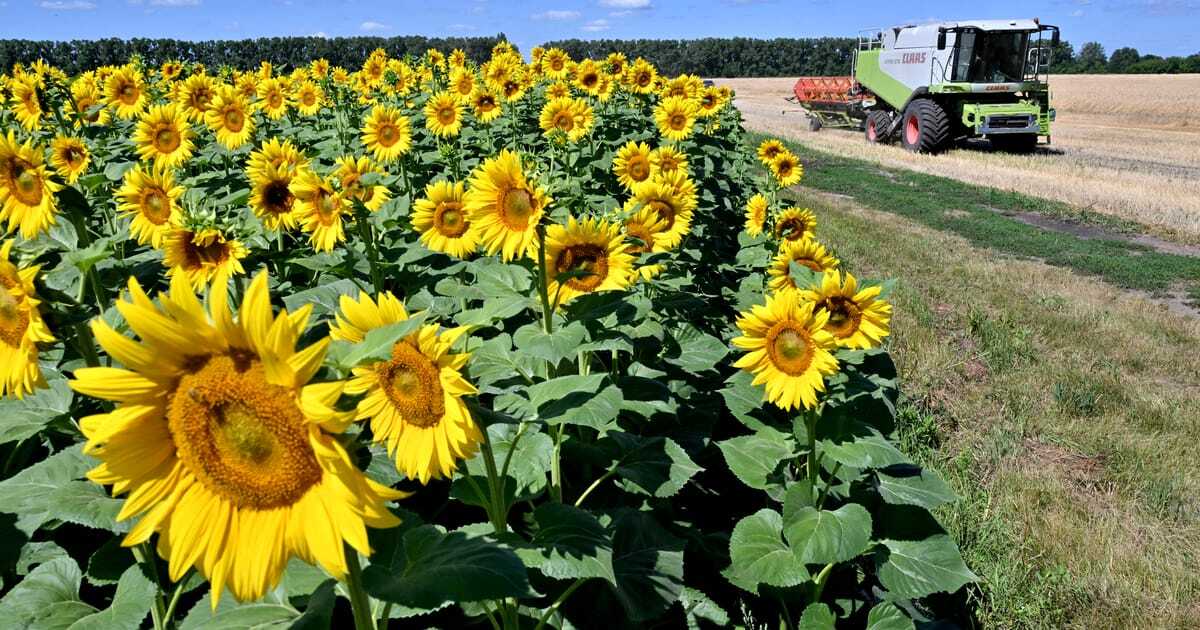
Good day to go to the Central Co-op here in Tacoma! This beer is made partially from Kernza, a perennial grain bred by The Land Institute.
This is the first perennial grain beer I've seen since the limited release of Long Root Ale in 2018. They also have a non-alcoholic version.
Perennial crops like Kernza have major environmental benefits. Due to their perennial habit, they also deep root systems that provide them increased tolerance to abiotic stresses like drought.
#China: Rising demand for food calls for efforts to boost #grains production & self-sufficiency to counter potential disruptions to agricultural #trade with the US, the EU & Canada. To ensure #foodsecurity, China can further develop & integrate #biotechnology, strengthen equipment support & build a diversified food system: https://www.reuters.com/world/china/chinas-food-demand-expanding-production-needs-be-strengthened-official-says-2025-02-24/
(2/2) Animal products, esp. ruminant #meat and luxury commodities like #coffee & cocoa, have 100x higher extinction opportunity costs than #grains & roots. Together with #dairy, #pig & #poultry products they form the majority of per-capita consumption impacts: https://doi.org/10.33774/coe-2024-fl5fk-v2 #beef #pork
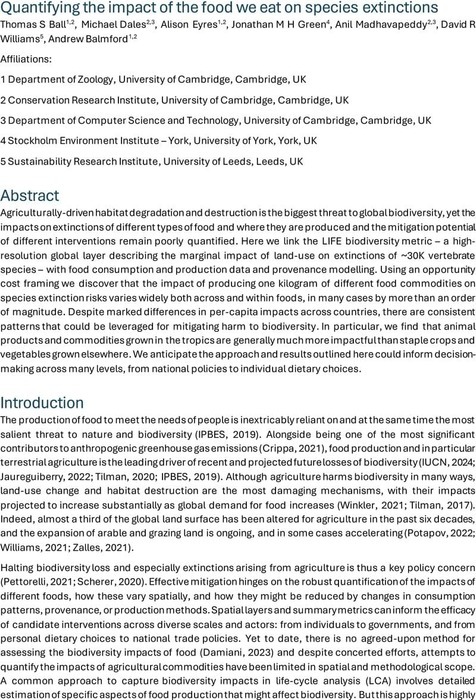
How Four Roses’ Unique Recipes Create Different Bourbon Profiles https://www.diningandcooking.com/1849301/how-four-roses-unique-recipes-create-different-bourbon-profiles/ #Bourbon #FourRoses #grains #Recipes #RecipesTopics #Rye #ThingsYouDidntKnow #Yeast
Why should you consume more whole grains? https://www.diningandcooking.com/1836051/why-should-you-consume-more-whole-grains/ #Affiliate #agriculture #Curious #Department #Eating #food #grains #GrainsU0026Pasta #Healthy #HealthyEating #Just #JustCurious #local #LocalAffiliateFood #nutrition #Of #Overall #OverallPositive #Pasta #point #positive #SEO #SEOWellness #the #to #ToThePoint #U.S. #U.S.DepartmentOfAgriculture #u0026 #Vegetarian #wellness

Chef Vikas Chawla’s Millets: The Grain Revolution Launched.
https://aliyesha.com/sub/articles/news/display/pb_book_launch_millets_chef_vikas_chawla
#punjab #chandigarh #india #news #press #food #diet #health #grains #grain #millet #millets #book #books #chef #CelebrityChef #VikasChawla
Enjoy tracker free reading with us. #privacy #privacymatters
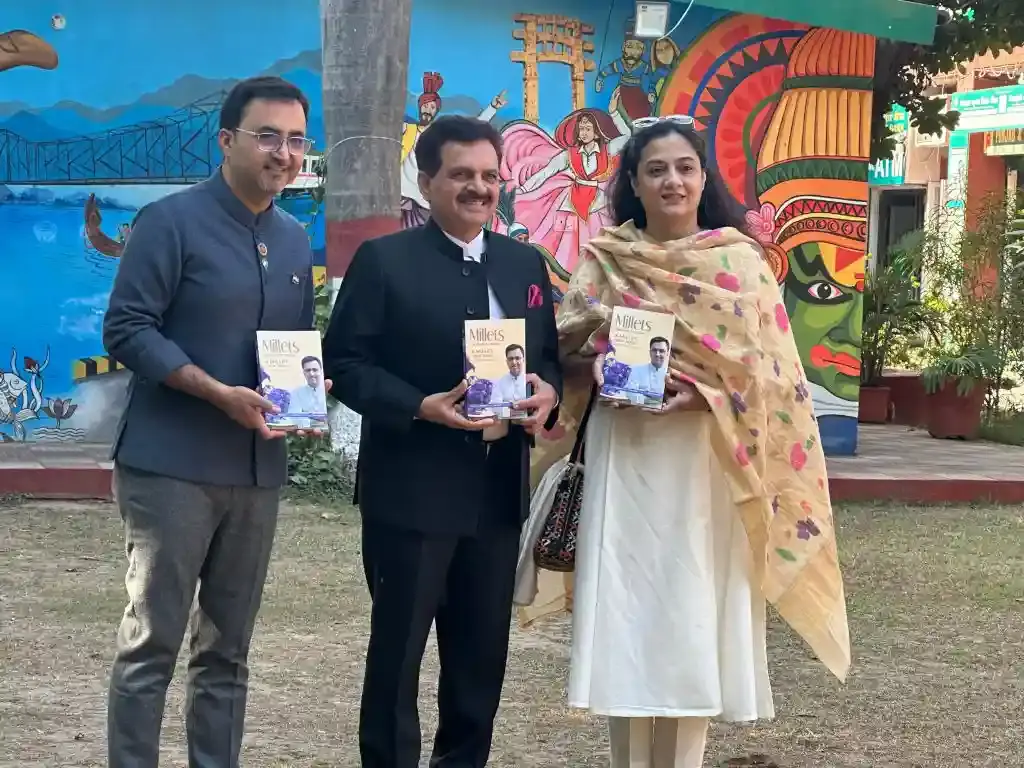
G.
Rice. A charcoal drawing of grains of rice, freshly cooked, part of the staple diet in Brazil, where I live.
[ Prints :https://james-mccormack.pixels.com/featured/rice-james-mccormack.html?utm_source=mastodon&utm_medium=social ]
Unhealthy #diets in global #foodsystems cost $8 trillion/yr. Risk factors are low intake of whole #grains, fruits & #vegetables, and high intake of #sodium and red & processed #meat, the latter of which is one of the top 3 dietary risks in industrial systems: https://www.fao.org/newsroom/detail/SOFA2024-8-trillion-in-annual-hidden-health-costs/ #health
Vortex Trapping Of Suspended Sand Grains Over Ripples
--
https://doi.org/10.1029/2023JF007620 <-- shared paper
--
“KEY POINTS
• Observations of vortex-trapped grains suggest delayed settling of advected grains, as well as delayed advection of grains mobilized from the bed
• Quantitative comparisons of vortex-trapped sand grains compared well with theoretical formulations by Nielsen (1992, https://doi.org/10.1142/1269) for a forced vortex
• Improved understanding of vortex trapping effects on sediment dynamics may decrease uncertainty in large-scale coastal model predictions..."
#spatial #model #modeling #water #hydrology #hydrodynamics #vortex #sand #sediment #transport #sedimentation #sedimentology #morphodynamics #fluiddynamics #ripples #coast #coastal #research #velocimetry #suspension #experimentation #dynamics #geology #processes #geomorphology #geomorphometry #vortextrapping #sand #grains #flow #ripple #sandwaves #ripples
1978 Vintage Beer Advertisement
The image is a vintage advertisement for beer, showcasing an illustration of a woman with dark hair styled in loose curls and adorned with autumnal leaves and grains. She appears to be sitting at a table or bar, holding her chin thoughtfully while gazing directly into the viewer's space.
https://nocontext.loener.nl/fullpage/08-August1978-Page-136.png
G.
Rice. A charcoal drawing of grains of rice, freshly cooked, part of the staple diet in Brazil, where I live.
[ Prints :https://james-mccormack.pixels.com/featured/rice-james-mccormack.html ]
Nankoweap Granaries in North Rim, Arizona
Hike up to this ancestral grain storage site, but don't touch.#stone #grains #hiking #indigenous #section-Atlas
Nankoweap Granaries


